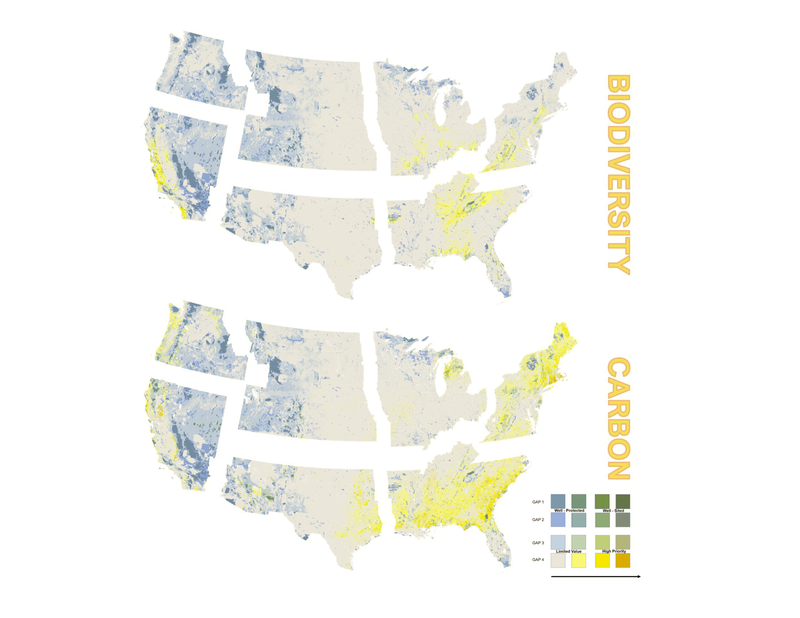

Addressing the current biodiversity crisis will require transformative changes to social, political and economic structures. One science-based recommendation is protecting at least 30% of Earth’s terrestrial and marine systems by 2030, a goal embraced by a global movement and popularized as ‘30x30.’ Here we report the current spatial patterns of biodiversity and carbon stores in the U.S. relative to protected areas to help conservationists and decision-makers understand the starting point on the path to achieving 30x30. Multi-scale analyses demonstrate that 30x30 is numerically achievable nationally, but high spatial heterogeneity highlights the need for tailored approaches from a mix of authorities at federal, regional and state scales. Critically, current protections regularly don’t overlap with areas essential for conserving imperiled species biodiversity and mitigating climate change impacts through carbon sequestration. We discuss this baseline relative to key policy considerations for making substantial progress toward the goal.